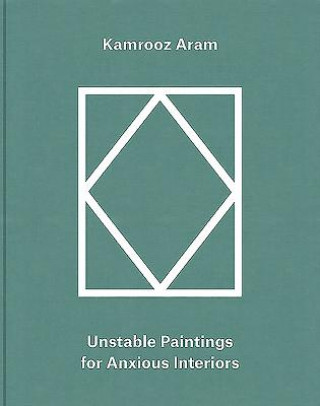
Kód: 04765414
Kamrooz ARAM
Autor Eva Diaz, Kamrooz Aram, Media Farzin, Murtaza Vali
This monograph on Iranian-born, Brooklyn-based painter Kamrooz Aram (b.1978) presents the Palimpsest series, which was in part inspired by graffiti on the streets of New York, and its constant painting-over by the authorities, onl ... celý popis
- Jazyk:
 Angličtina
Angličtina - Vazba: Pevná
- Počet stran: 80
Nakladatelství: Anomie Publishing, 2014
- Více informací o knize

916 Kč
Dostupnost:
50 % šance Máme informaci, že by titul mohl být dostupný. Na základě vaší objednávky se ho pokusíme do 6 týdnů zajistit.
Máme informaci, že by titul mohl být dostupný. Na základě vaší objednávky se ho pokusíme do 6 týdnů zajistit.Prohledáme celý svět
Mohlo by se vám také líbit
-

Process Control for Sheet-Metal Stamping
3289 Kč -

Walking Home From Mongolia
403 Kč -

Managing Yourself for Excellence
322 Kč -

Optimization Techniques for Solving Complex Problems
4980 Kč -

Wild Things
449 Kč -

Jesus und die Figur der Zwoelf
1307 Kč -

Hallo! ... Ich Bin Antik, Nicht Doof
622 Kč
Darujte tuto knihu ještě dnes
- Objednejte knihu a zvolte Zaslat jako dárek.
- Obratem obdržíte darovací poukaz na knihu, který můžete ihned předat obdarovanému.
- Knihu zašleme na adresu obdarovaného, o nic se nestaráte.
Informovat o naskladnění knihy
Zadejte do formuláře e-mailovou adresu a jakmile knihu naskladníme, zašleme vám o tom zprávu. Pohlídáme vše za vás.
Více informací o knize Kamrooz ARAM
Nákupem získáte 92 bodů
 Anotace knihy
Anotace knihy
This monograph on Iranian-born, Brooklyn-based painter Kamrooz Aram (b.1978) presents the Palimpsest series, which was in part inspired by graffiti on the streets of New York, and its constant painting-over by the authorities, only for it to become covered again in graffiti. The ongoing cycle of painting, covering-up and repainting in the urban environment connects with Aram s long-standing fascination with modernism and the legacies of Abstract painting.Aram explains: The word palimpsest derives from the Greek term for a manuscript that has been scraped down so it can be reused. However, this process of erasure is always incomplete and traces of previous layers remain visible beneath the most recent marks. I find the idea of painting as palimpsest compelling because such a painting reveals its own past. The concept of the palimpsest in relation to Aram s practice is explored further in the publication in texts by Eva Diaz, Professor of Contemporary Art at Pratt Institute in New York, and art historian and critic Media Farzin.As discussed in an engaging interview between the artist and critic and art historian Murtaza Vali, Aram s interest in painting as palimpsest evolved over years of observing and photographing walls in cities across the world, from Brooklyn and Queens to Beirut and Istanbul. The worn walls of Beirut still bear the scars of the civil war, while in Brooklyn, years of graffiti and its covering-up reveal the history of New York City. This phenomenon takes on a different, but related meaning in a city such as Istanbul, where the graffiti is the result of public demonstrations related directly or otherwise to the Gezi Park protests. Aram states: The graffiti was obviously political and so the state s response was rapid. The protesters would write and the state would cover it up immediately. A photo essay and text by the artist further explore notions of the palimpsest and covering-up.In the Palimpsest series, a floral motif that Aram appropriated from a Persian carpet on sale in a shop in Manhattan becomes a key element in the series, submerging and re-emerging within the many layers of accumulated and erased marks on his canvases. Working serially, the artist begins each painting with this floral form, drawn across the surface of the canvas in a grid, creating an overall pattern. Aram then begins destroying and rebuilding this pattern through a process that involves additive as well as subtractive mark-making: wiping away and scraping down the painted surface over time to reveal previous layers. The relationship between West and East, and more specifically between the United States and the Middle East, has long been a key concern in Aram s life and work. Central to Aram s practice to date is the interface between Middle Eastern traditions of pattern-making, decoration and ornamentation, and the 20th century Western tradition of modernist painting, with geometry often intersecting the two worlds. The mixing of these once diametrically opposed paradigms tells a more complex story in Aram s paintings of interwoven cultures, interconnected politics, and of visual languages that collide, recede and reemerge over time.Kamrooz Aram graduated with an MFA from Columbia University, New York, in 2003. Since then his work has been widely exhibited internationally and featured in publications such as The New York Times, The New Yorker, The Village Voice, Art in America, Artforum.com, ArtAsiaPacific, and Bidoun. Aram was a recipient of the Abraaj Group Art Prize 2014. The publication, illustrated with over fifty plates, photographs, and details, has been edited by Yasmin Atassi, designed by Joe Gilmore / Qubik, printed by Die Keure, Bruges, and co-published by Green Art Gallery, Dubai, and Anomie Publishing, UK."
 Parametry knihy
Parametry knihy
Zařazení knihy Knihy v angličtině Humanities History History: earliest times to present day
916 Kč
- Plný název: Kamrooz ARAM
- Podnázev: Palimpsest: Unstable Paintings for Anxious Interiors
- Autor: Eva Diaz, Kamrooz Aram, Media Farzin, Murtaza Vali
- Jazyk:
 Angličtina
Angličtina - Vazba: Pevná
- Počet stran: 80
- EAN: 9780957693661
- ISBN: 0957693664
- ID: 04765414
- Nakladatelství: Anomie Publishing
- Hmotnost: 878 g
- Rozměry: 325 × 255 × 14 mm
- Datum vydání: 01. May 2014
Oblíbené z jiného soudku
-

Learn to Read Ancient Sumerian
789 Kč -

Russian Journal
356 Kč -

King's Two Bodies
680 Kč -

Heart of Europe
517 Kč -

Armies of Castile and Aragon 1370-1516
441 Kč -

One Hell of a Gamble
677 Kč -
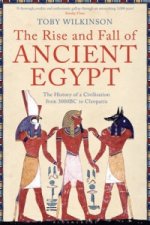
Rise and Fall of Ancient Egypt
463 Kč -

Guns, Germs, and Steel
298 Kč -

The Origins of Totalitarianism
302 Kč -

Illustrated Encyclopedia of Uniforms of World War I
543 Kč -

The Art of Combat
880 Kč -
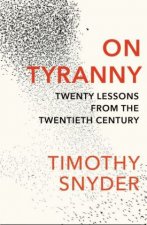
On Tyranny
212 Kč -
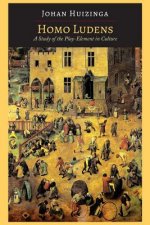
Homo Ludens
303 Kč -

Tuesdays With Morrie
302 Kč -

History of the Decline and Fall of the Roman Empire
356 Kč -
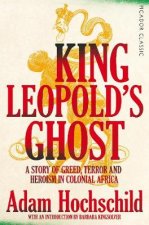
King Leopold's Ghost
302 Kč -
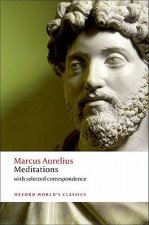
Meditations
223 Kč -

Streams of Gold, Rivers of Blood
775 Kč -

Travels of Ibn Battutah
431 Kč -

Augustus
410 Kč -

Age Of Capital
410 Kč -

Egyptian Book of the Dead: The Book of Going Forth by Day : The Complete Papyrus of Ani Featuring Integrated Text and Full-Color Images (History ... M
730 Kč -

Deng Xiaoping and the Transformation of China
788 Kč -

Age Of Extremes
487 Kč -

John Skylitzes: A Synopsis of Byzantine History, 811-1057
969 Kč -

Arms and Armour of Late Medieval Europe
276 Kč -

Alexander the Great
420 Kč -

End of Days
204 Kč -

Shake Hands With The Devil
378 Kč -

Complete Roman Army
543 Kč -

Distant Mirror
356 Kč -

Fall of the Roman Empire
614 Kč -

Fifties
485 Kč -

After the Ice
463 Kč -

Histories
143 Kč -

Savage Continent
410 Kč -

Oxford IB Diploma Programme: The Cold War: Superpower Tensions and Rivalries Course Companion
1371 Kč -

Age Of Empire
410 Kč -

Pompeii
302 Kč -

Life in a Cave
177 Kč -

Oxford Illustrated History of Prehistoric Europe
874 Kč -

On the Ocean
923 Kč -

Flowers of Battle The Complete Martial Works of Fiore dei Liberi Vol 1
3491 Kč -

On Ancient Warfare
1066 Kč -

Access to History for the IB Diploma: Causes and effects of 20th-century wars Second Edition
905 Kč -

Safe Area Gorazde
517 Kč -

Yoga Body
456 Kč -

Fear and Loathing on the Campaign Trail '72
356 Kč -

Fall of Carthage
410 Kč
Osobní odběr Praha, Brno a 12903 dalších
Copyright ©2008-24 nejlevnejsi-knihy.cz Všechna práva vyhrazenaSoukromíCookies


 Vrácení do měsíce
Vrácení do měsíce 571 999 099 (8-15.30h)
571 999 099 (8-15.30h)